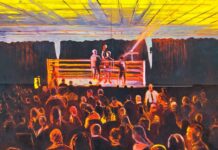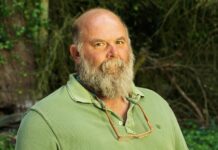A man tapped me on the shoulder and beckoned me to follow. We were half way through dinner but staggered out into the treacley darkness of Central Africa, stumbling to keep up with the distant wavering of his torch.
His beam was then turned off and from then on we made our way along the beach by moonlight, careful not to trip on the thick tree roots, until we stopped at an unmarked spot on the beach. A dim red light swept the tree line finally finding what it was searching for. The silence was overwhelming.

The huge turtle was stretched a meter long in the hollow it had carved out in the sand having dragged herself up the beach by her fins, and there she proceeded to lay her eggs, shuffling as she did so, right in front of our very eyes.
It was a moment I will never forget, playing out at Inhame Resort and Eco Lodge, where staff at the extensive conservation project man the beaches 24/7, digging up the turtle eggs and returning them to a safe compound where they can hatch, away from the marauding crabs, dogs and pigs, two months later.
It was a seismic moment, but then Sao Tome is nothing if not full of surprises, and this was just one of many,

Few of you may have heard of the island lying off Gabon which was Portuguese until the 1970s when the colonial chains were finally loosened and then discarded.
I hadn’t either, but the tropical island has popped onto the western radar this year, keen to advertise itself as a new tourism destination, although previously unknown.
But that’s its charm, the São Toméans having absolutely no idea what they have on this lush, verdant, vibrant, island in the middle of The Gulf Of Guinea, none at all.

Had I known, I could have answered for them: miles and miles of solitary white beaches and turquoise sea, some of the best diving in Africa, turtle projects, whale watching, endangered birds coming out of their ears, fruit and vegetables you’ve never even heard of, cloud jungle in the mountains, rain forests , volcanic magma peaks, waterfalls, trekking, eco lodges, some amazing restaurants, but more than anything it’s the people who make it: the best reflection of a nation there could possibly be.
To give you an idea, São Tomé’s national catchphrase is ‘Leve Leve‘ which means ‘slowly slowly’, which tells you everything you need to know about this laidback people.
So let’s begin at Heathrow, then Lisbon, from where TAP Portugal flies direct, refuelling in Ghana. It’s a long way, but emerging off the plane you could smell Africa, a scented, exuberant, heat that embraces and welcomes you in a sweaty hug.
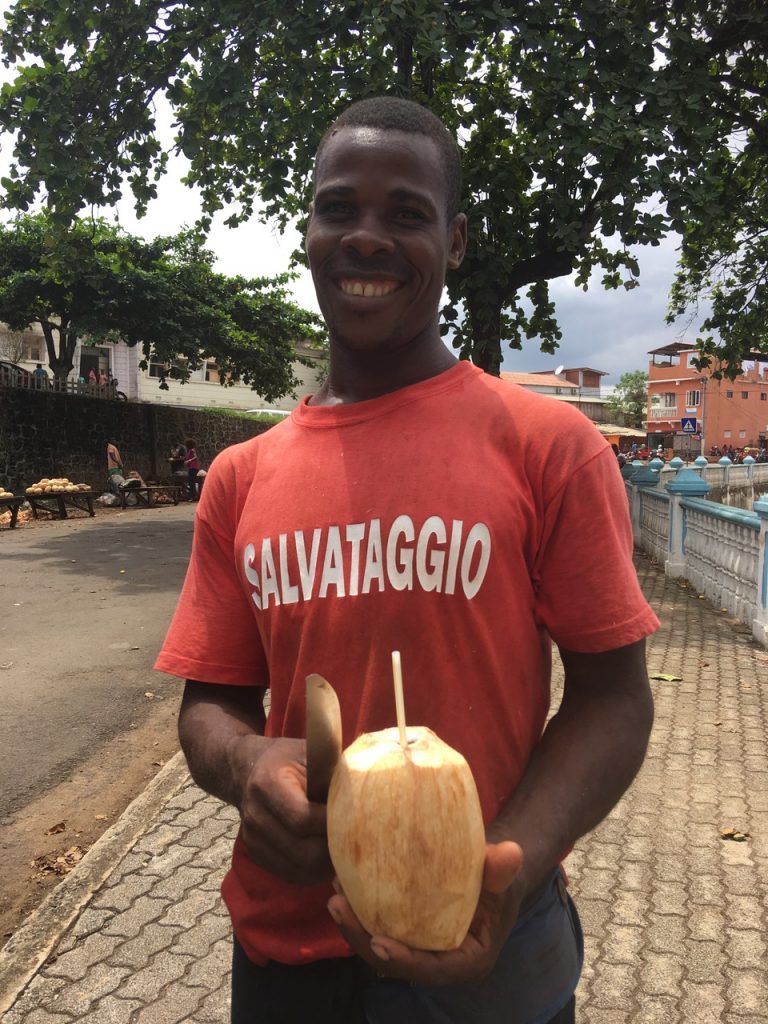
It’s a hug that didn’t let us go until we returned home, the tropical temperature of the rainy season continuing unabated. The dry season is a deceptive term, being colder and duller.
Now is the time to go when everything is lush and wet, fruit bursting from every tree, a profusion of colour and taste; jack fruit, bread fruit, papaya, pineapple, avocado, passion fruit, sap sap, dragon fruit, the list goes on and on.
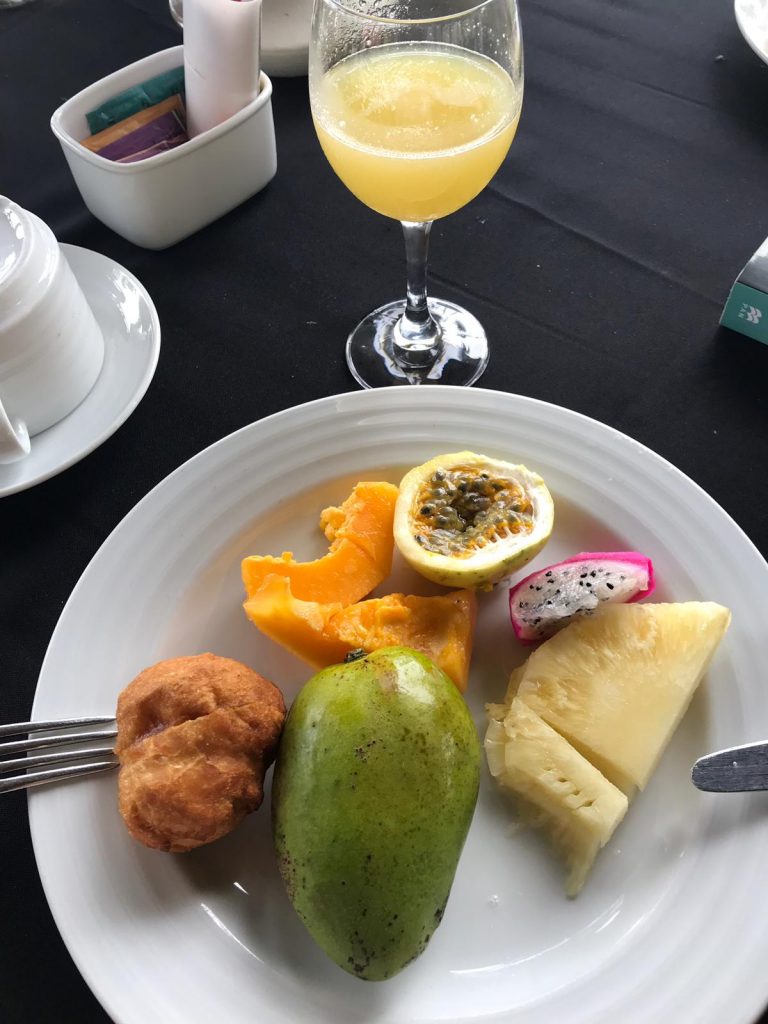
Which is why the Portuguese came in the first place, setting up plantations for the abundant coconut, cacao and palm growing here, the island still littered with their colonial homes and businesses.
Only one plantation has been given a new lease of life, bought by a Frenchman five years ago, and already proving enormously successful. The rest rot away slowly, their Portuguese pretentions slowly disappearing back into the jungle from whence they came.
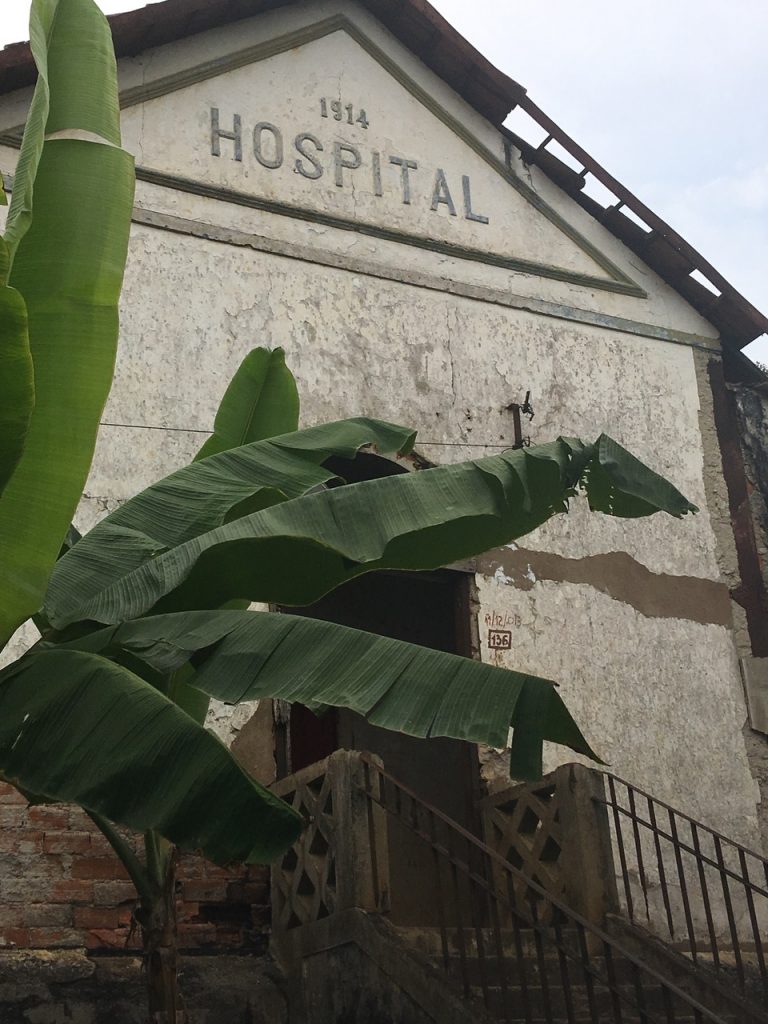
Local families have since snuck back to live in the ghost towns once inhabited by slaves and their masters, relying on the abundant produce that still grows, the women washing clothes in the local rivers, all the children attending local schools.
And yet poverty is evident everywhere. Sao Tomé is unmistakeably third world, and those preferring a sandy idyll fly on to Principe, the São Toméan island in the south, where expensive hotels dot the sands and cater for their every need.
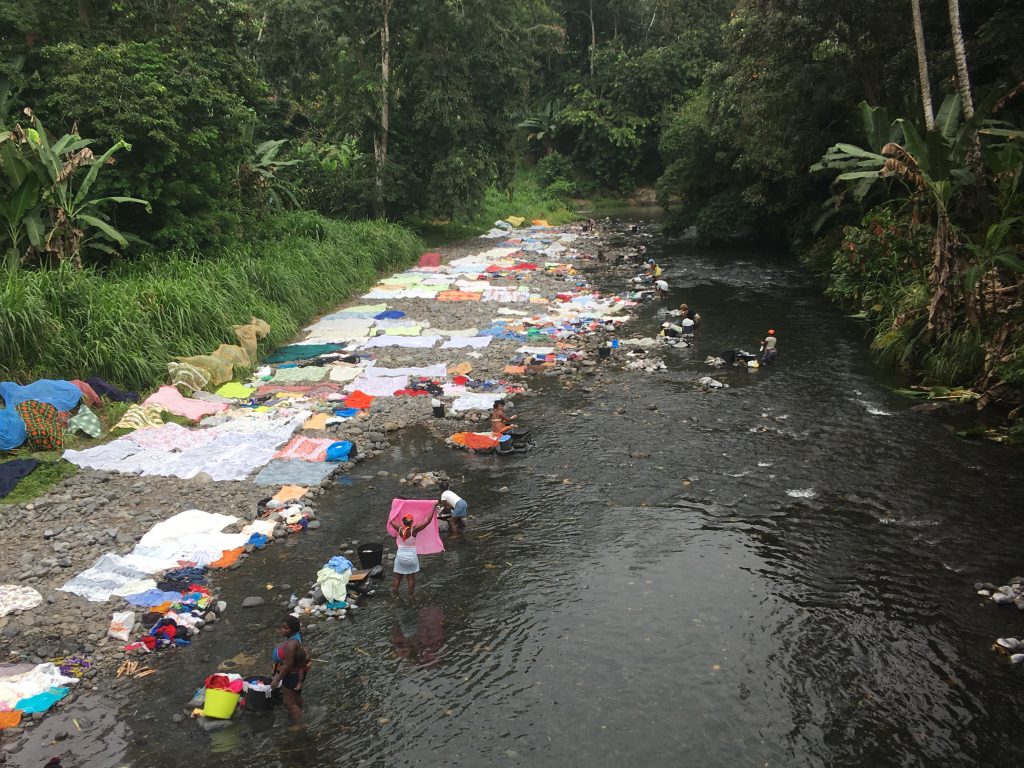
Others however want more, to explore and absorb, experience the people, their food, wildlife and culture, to revel in this largely undiscovered island and it’s sheltered unworldly existence while they get the chance,
They want an adventure, to be pioneering, to step onto the soil of one of the world’s last undiscovered destinations and its intrepid thrills.
And so like us they roam from the capital to the wildlife centric north and the island marked south, taking in as much as possible en route.
We had a guide for our stay, as is the norm. It’s a great idea because not only does your guide take you around by car, foot and ferry, but they are also on hand when your Portuguese falters, to point out local points of interest and history and to keep you company.
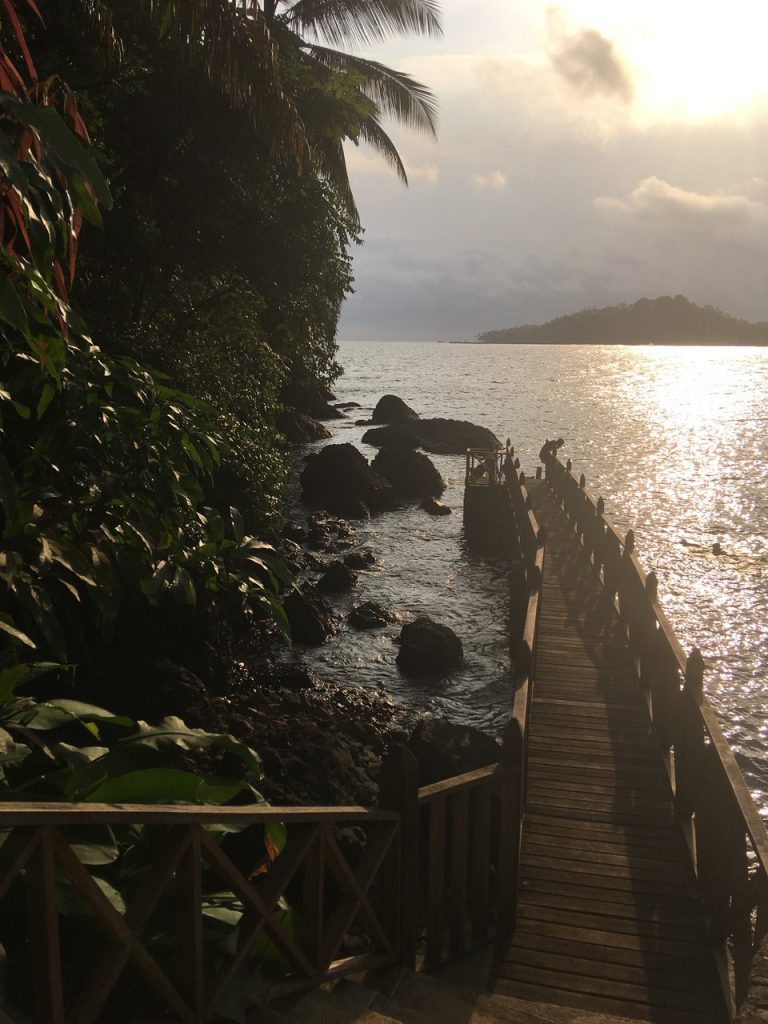
William, was a godsend; cheerful, eternally happy, hard working and patient, with a wonderful sense of humour, he revealed his island to us day by day, peeling back the layers one after another, in a seemingly inexhaustible supply.
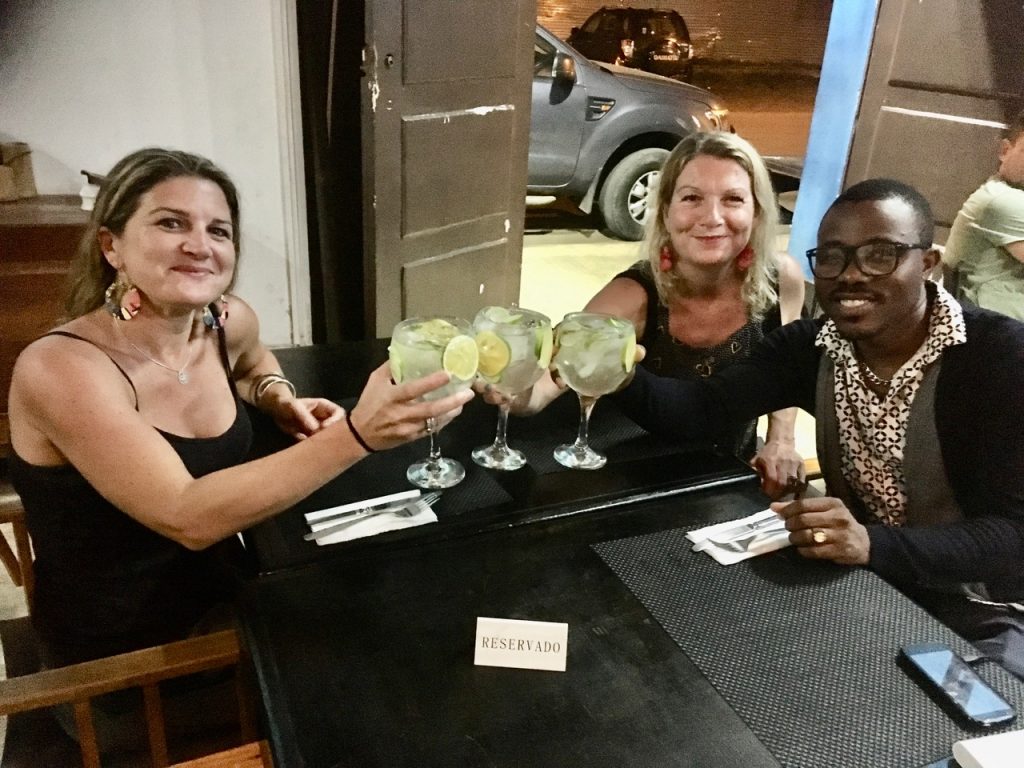
He arrived on our first morning as we ate breakfast in the upmarket Pestana Hotel with its infinity pool overlooking the sea, to take us into the jungle, leaving the capital and slowly working our way through the outskirts , the roads ringed with villages of shacks of makeshift wood and corrugated iron. Children in uniform continually paraded past, attending classes at different times of the day to accommodate them all; laughing, chatting, staring, and always eating fruit.
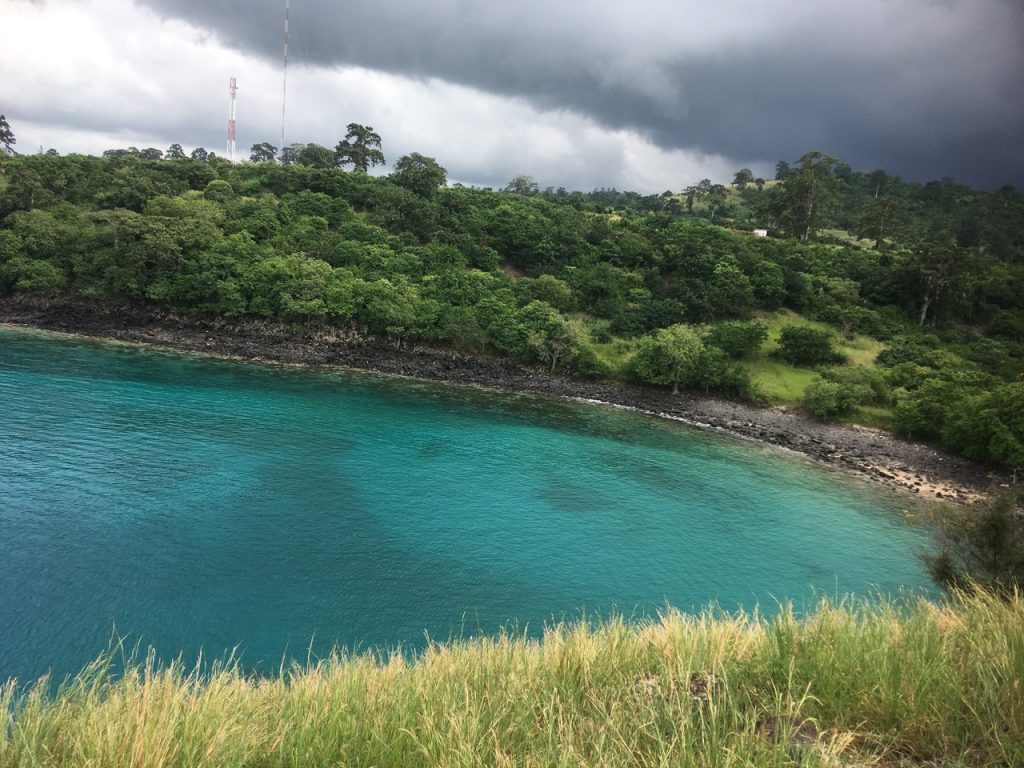
We stopped suddenly in front of a brightly coloured obelisk, enjoying its bright colours until we realised it commemorated the Islands’ worst ever massacre when the Portuguese murdered over 1000 locals in an uprising against the colonials.
It was a stark reminder of São Tomé’s brutal past where slavery and subjugation were the norm. Living on a tropical paradise came at a cost, as much of Africa and its slave trade can attest to.

As the week unfolded, we saw deserted plantation after deserted plantation, the São Toméans ignoring their masters contribution to island life, when the oppressors left in the 1970s.
Next stop a palm wine stand, found in every village randomly along the road,. We drank the tart, fruity home brew served in jam jars with the friendly locals.
The landscape changed as we passed through it, every shade of green, towering trees bursting with strange fruits and vines, pigs and chickens roaming free, clouds beginning to creep in as we got higher and higher, reminding me of Uganda.

And then we stopped having driven up in an innocuous track to an unlikely looking wooden restaurant perched on the side of a mountain with views to die for. Even more unlikely, the taster menu was outstanding, as course after course of local fish, veg and chicken came out, beautifully presented and inventively cooked. Sao Tome is nothing if not an island of contradictions.
The suburban sounding botanical gardens took us higher and higher as the car groaned up a rough track. Men with machetes with huge bunches of bananas slung over their shoulders greeted us as we ventured further and further inland.
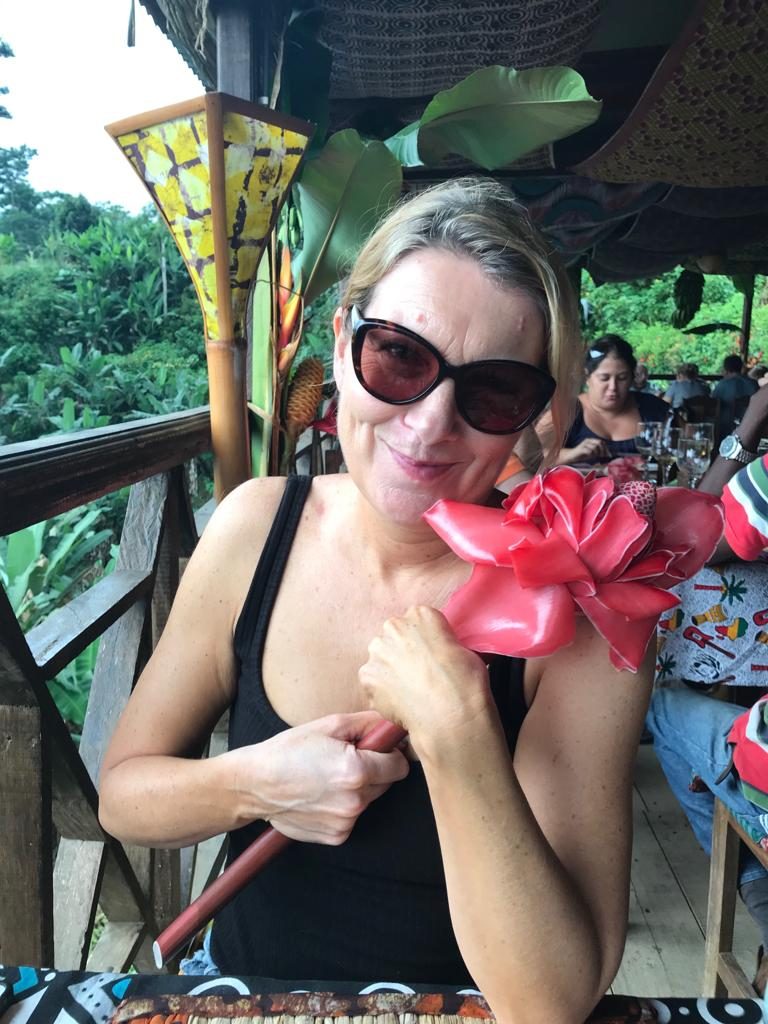
The actual gardens were hilariously modest compared to the rampant jungle around them, and the perfect paradigm of man trying to tame nature. We returned via a gushing waterfall, watching as the hundreds of gallons fell hundreds of metres down.
Staying in the St Pedro guesthouse, an oasis from the teaming, dusty streets of Sao Tome’ capital, it was a great example of a the range of budget hotels here, with its little bar, swimming pool and clean, refreshing rooms.

“If I didn’t know you better I’d think you were leading us up the garden path”, I muttered to William as we drove up a dirty track later that night, animals snuffling for food, stopping at a corrugated iron door and a concrete floored restaurant within, lit by fluorescent strip lights. The signs weren’t good, despite Mama Tete’s reputation. ‘Do you want fish or chicken?’ we were asked.
‘Chicken please.’ ‘No,’ we only have fish.’ Fish it is then.
Nervously looking around, hilariously, every other customer was white, the only we’d seen on the island since arriving. We were all having fish.
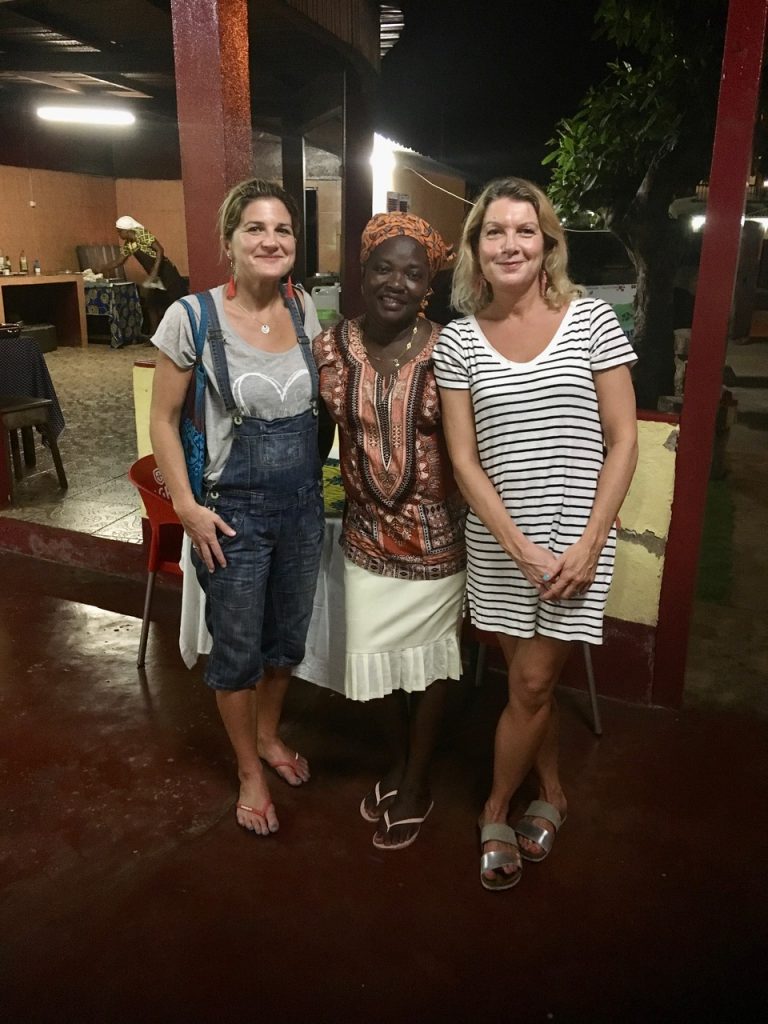
The first mouthful was one I’ll never forget; meaty, spicy, fragrant, beautifully marinaded and so fresh, it was the best we’d ever tried, unanimously agreed. Mama Tete was onto something,and we waved goodbye as she chased a massive crab out of an outbuilding with a broom.
The next day we concentrated on the capital, it’s national museum in a tiny fort, it’s cathedral complete with a blue and white Portuguese tiled altar, a coffee plantation in the outskirts, a new chocolate shop.
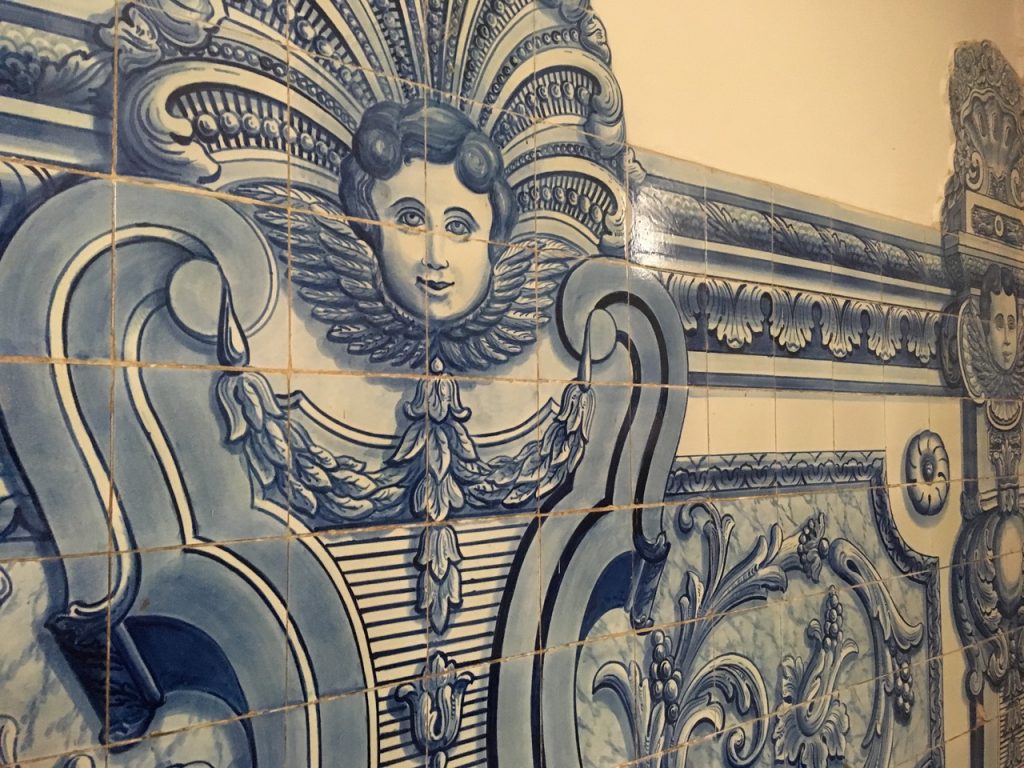
We bought wooden painted masks and African print dresses in the markets which stretched as far as the eye could see, giant warehouses rammed with locals selling fresh fish, innards in bowls, fruit, veg, herbs, pastes, spices in a bewildering array of choice and crowding, noise and smells. We spent the whole afternoon at Mercado Grande and didn’t see another white person. Yet the car was left open. There is no animosity, threat or temptation here. Tourism could change that.
The new Cacau Centre is due to open this year with a bigger, newer museum, and a huge vibrant restaurant where guests are entertained by local dancers and entertainers, a taste of things to come perhaps.
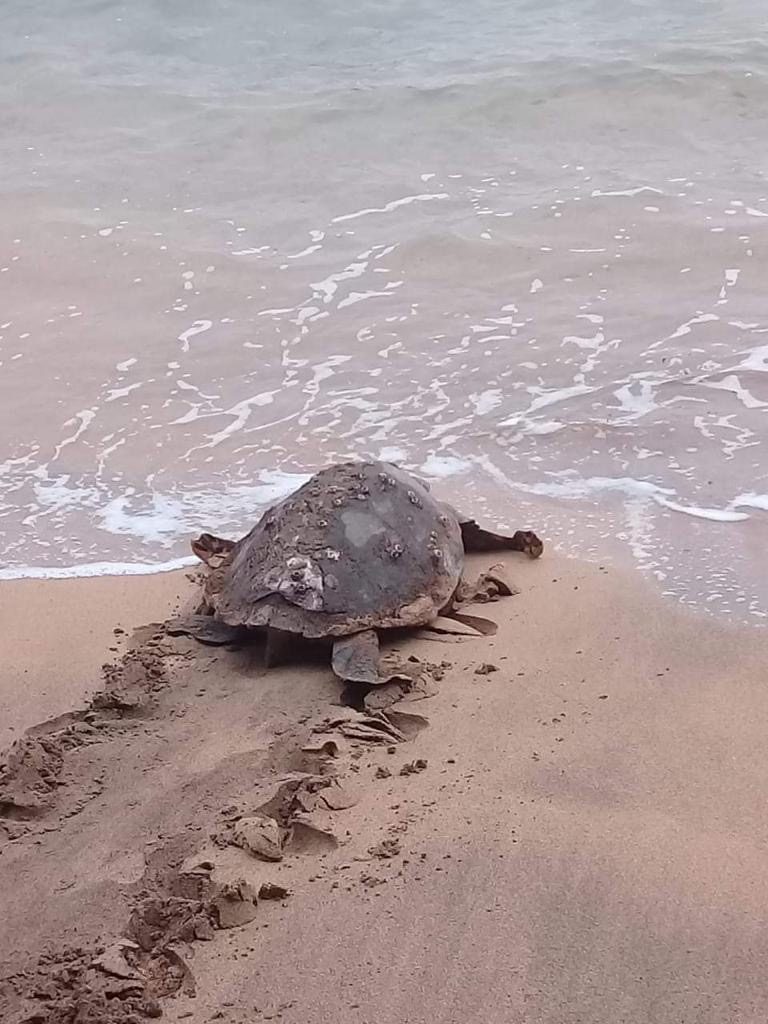
Afterwards we discovered our favourite bar, The Container, set off the main road overlooking the sea where the best passion fruit caprhainas were concocted under a tropical sky.
Hotel Central was unmistakably Portuguese, all dark woods and huge paintings, but the rooms clean and comfortable.
And then we were off, the morning seeing us leave the city and descend into the depths of the countryside to the Praia Inhame Eco Lodge where our turtle adventure began.
The road peters out half way there, meaning progress was slow, but the landscape made it worth every jolt – Volcanic peaks, particularly the Pico CAro Grande rising in the distance, towering over the dense rainforest.
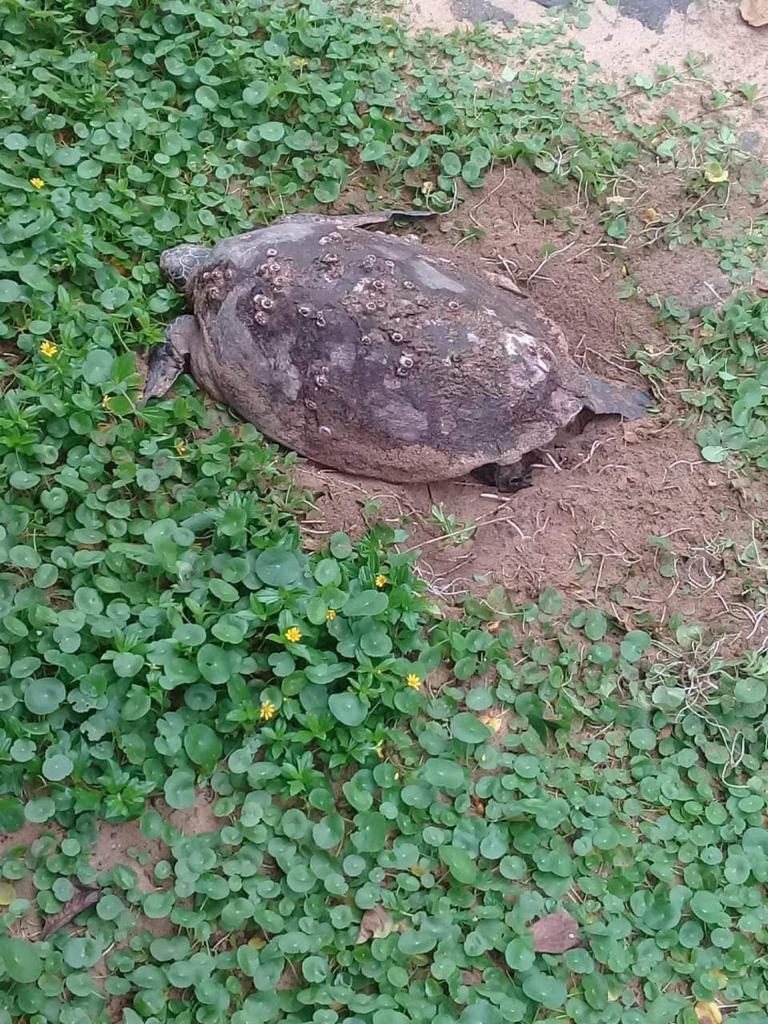
At Praia Inhame, log cabins dot the grounds and the main house boasts a fun restaurant, framed by a huge deserted beach.
We stayed the night, and after our turtle adventure, were reluctant to leave, but Rolas Island in the south called.

En route we stopped at a beach where we found a man carving a huge fishing boat out of a tree by hand, as you do on a Tuesday morning. This beach too was deserted although it did have a tiny beach shack/ bar., the white sands stretching away end,essay before us.

A local celebrity chef’s restaurant was our lunch stop. I was expecting a jolly Ainsley Herriot style set up. What we got was a Le Manoir style reverence to food as dish after exquisite dish came pouring out of the kitchen. We lost count after 10, stunned that Sao Tome could pull something of this calibre out of its culinary hat. Never again will I underestimate it. The restaurant has rooms and a gallery.
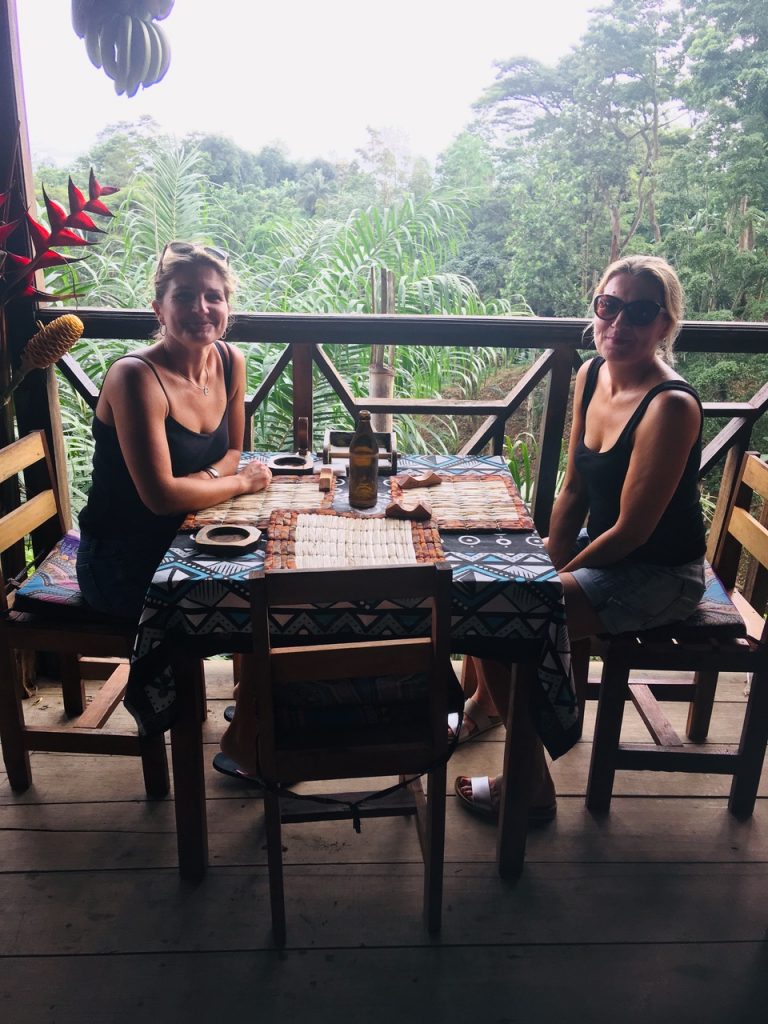
Rolas Island was something else entirely. The ferry terminal itself was utopian, the wooden pontoon a swimming site for local kids diving into the warm sea as the sun set around them until a tiny white motorboat appeared and they all scattered.
Rolas has a Pestana Equador, with a tropical beachfront location, swimming pool and cabana rooms. A short walk to the peak and you find the equator line, posing for the inevitable picture, before veering off through the village ( shanty town) to the revered Coffee Beach clutching a couple of cold beers.
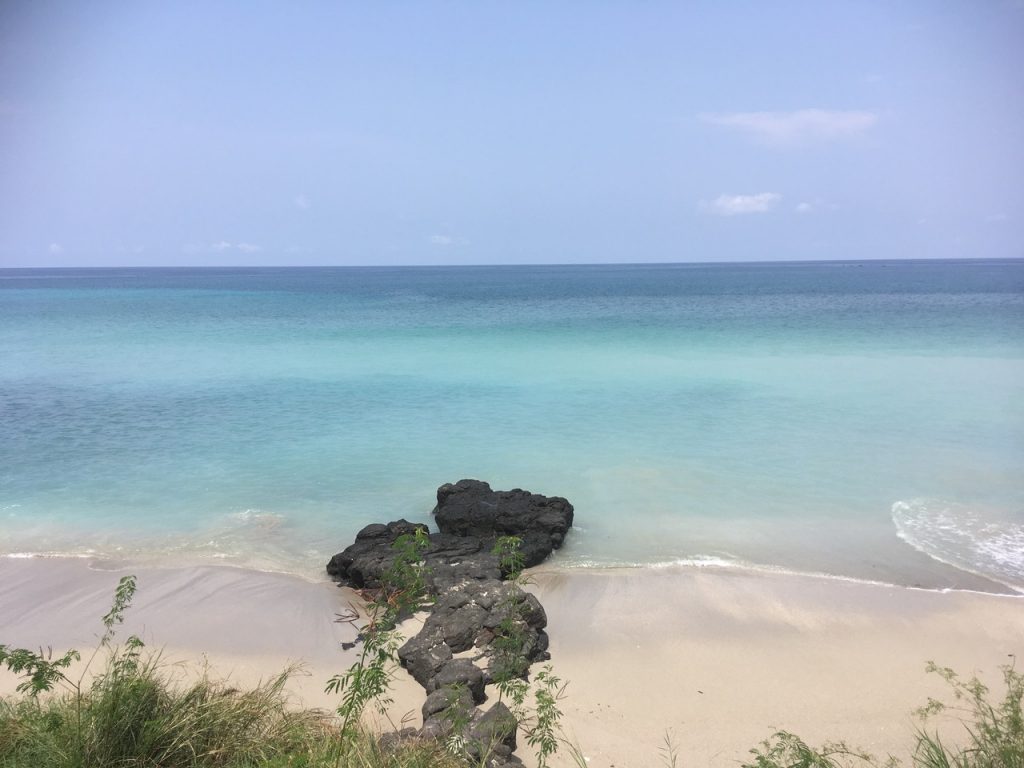
It defied belief. I’ve never been anywhere so unspoilt. The beach was empty; turquoise waves crashing down on the white sands as we whiled away the afternoon unable to believe our luck, or its beauty. Could things get any better?
Yes. The next morning, after visiting the appropriately named Blue Lagoon, a few swimmers breaking the bright blue expanse, we trooped north to Jale beach. It was an inauspicious location. A small scrubby expanse where we parked and tripped over a shark caught by the fishermen earlier that day.
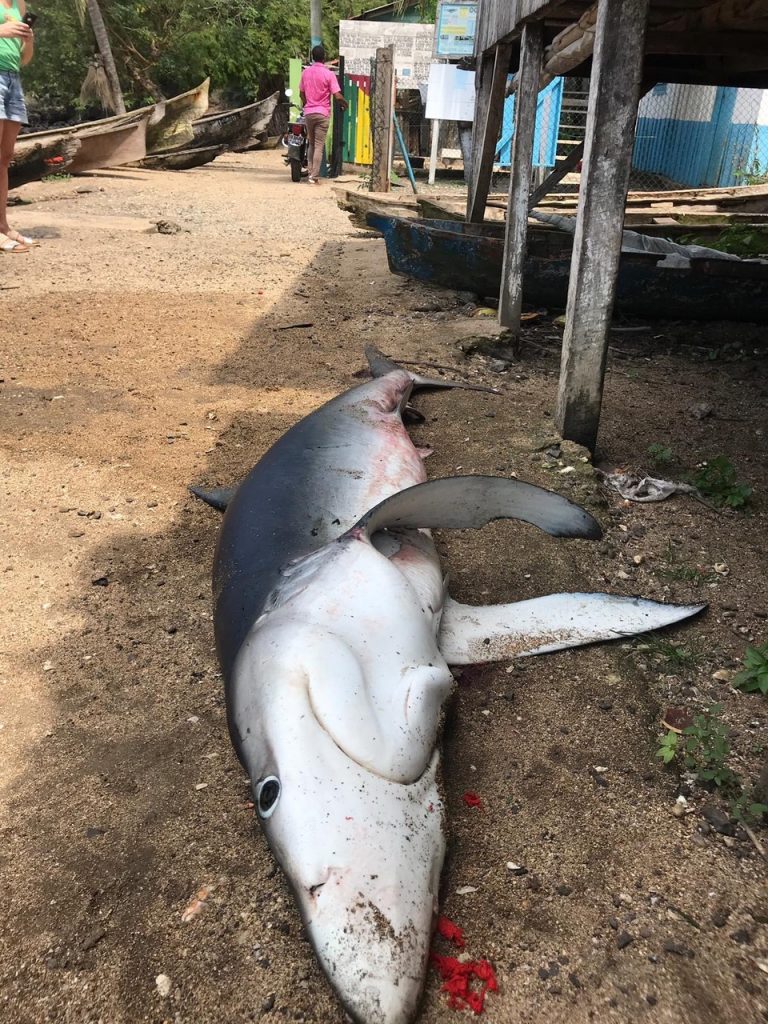
We were dutifully looking at the maritime posters when the guide came in and pressed something into our hands. We looked down to see tiny baby turtles, just born in the protected compound outside. Again totally unexpected, life transforming and discussed at great length at Papafigo’s snack bar back in the capital; later that night over plastic tables, bright tablecloths and some wonderful cocktails.
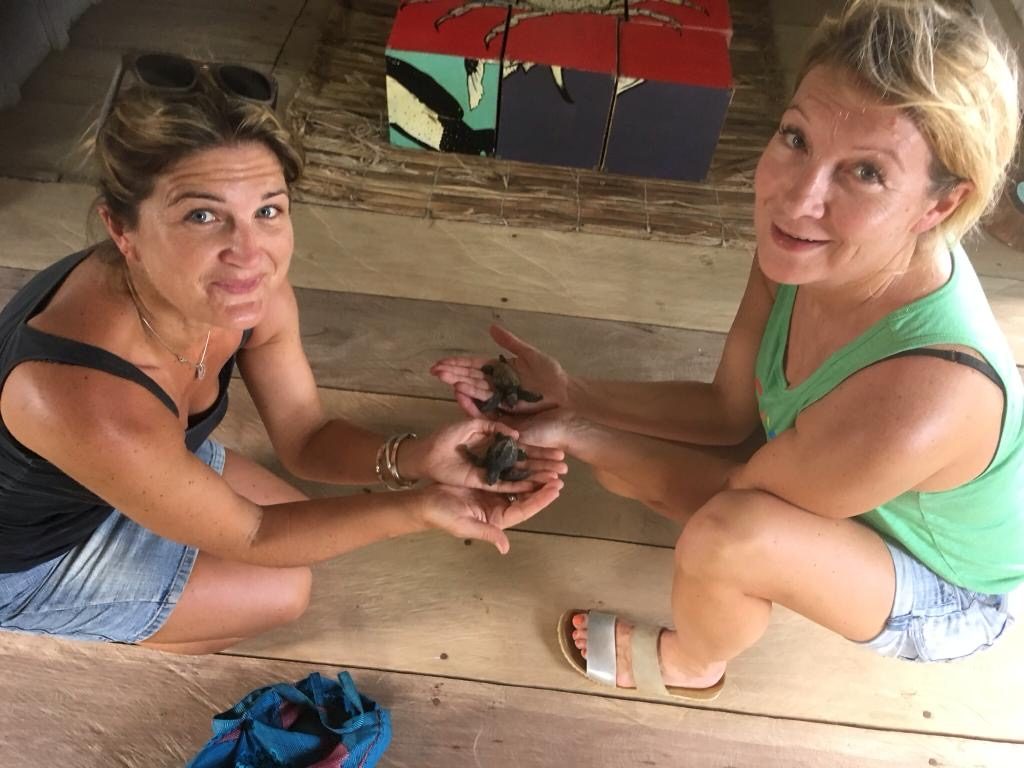
On our last day we headed north to capture the wildlife and plethora of birds which grew thicker and more brazen as we proceeded to the tip of another eco lodge. Here the cabins have verandas and bird feeders looking out to sea where the birds flock, all rare and endangered and unlikely to be found elsewhere. It was a real retreat with a central hub and kitchen providing some amazing food.

We spent the last day lounging by the pool exhausted at Pastana Miramar, waiting for our flight later that night, finally able to catch our breathe and process the spectacular landscapes, experiences and characters we had found along the way.

So much more than a holiday, Sao Tome will change the way you see the world for ever.
LUCY ROGERS
For more information go to












